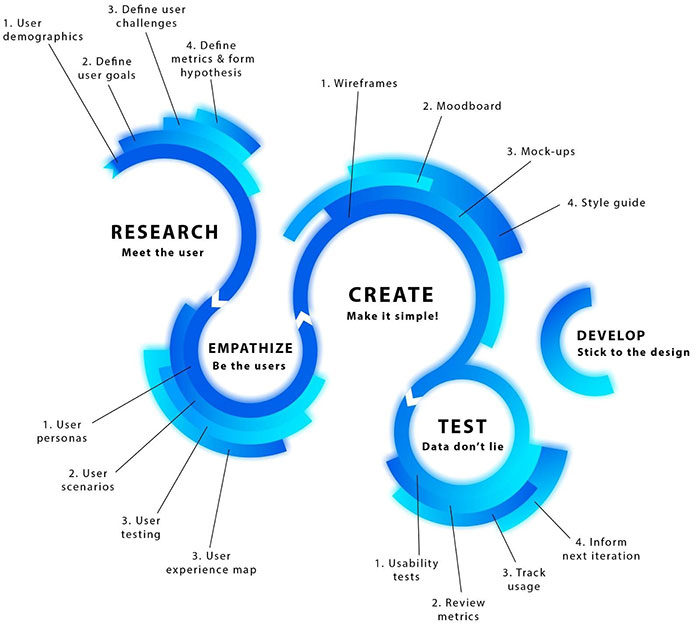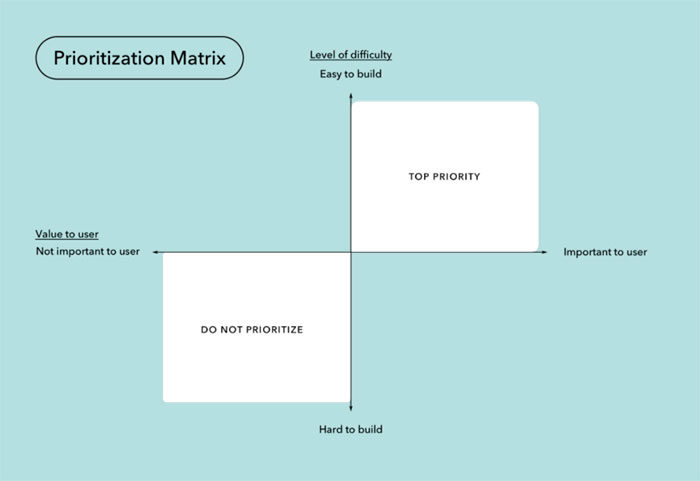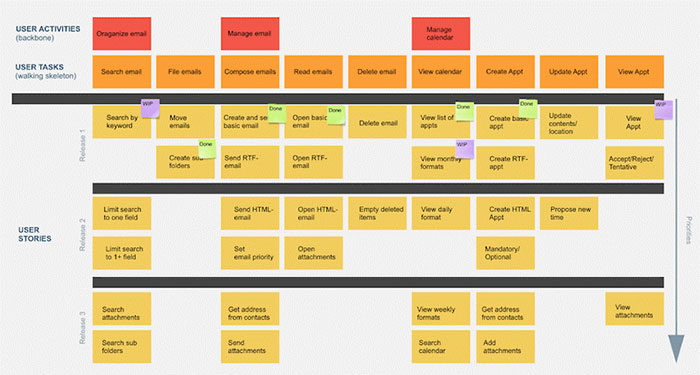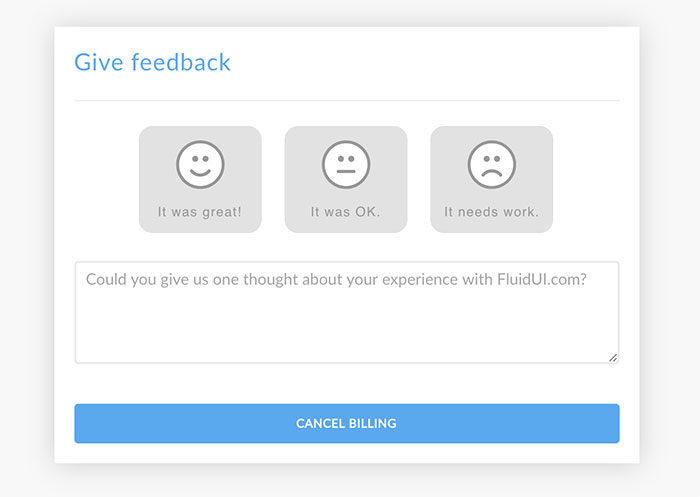We all want to be appreciated for the quality of the work that we do. In many teams however, the benefit of assigning dedicated time to UX research isn’t always understood by all the members of the team.
Getting buy-in often means fighting an uphill battle to justify the time and expense.
It’s one thing knowing that the answer lies in your customer’s minds, it’s another thing convincing your peers to listen.
Most people simply prefer to rely on their own opinions (or those of the HIPPO’s) and keep moving forward.
Taking on this challenge is the first step when making sure your customers’ voices become a leading contributor to the overall direction of your company.
The good news is that when teams go through a number of iterations of the UX review process, they both learn the benefits and come to care more about the overall customer experience that they previously did.
Everybody wins! Getting there is simply part of the journey, and one every great UX practitioner must master.
If you are currently on this journey, or indeed have travelled it before, but are looking for a few extra tips, I’d like to offer some tips on smoothing this learning curve based on my 100’s of customer interviews and conversations with other UX researchers.

Source: https://medium.com/@alexwyrick/ux-design-process-a66e6796857e
Tip 1: Know the different tools in your arsenal
Research can be conducted in multiple ways
The greater the number of different approaches you can use to identify customer problems, the broader your understanding of the customer’s problems will be.
This in turn feeds into the robustness of your identification of customer problems and your solutions to them. Try mixing the small (qualitative feedback, like contextual inquiry) with the large (quantitative analysis, like Google analytics data) to get the best overall results.

Source: http://www.cdsmr.com/newsworthy/qualitative-quantitative-research-the-cds-way
There is no empathy in data
As designers, our responsibilities are twofold – to build an emotional resonance into our products, while at the same time, designing to achieve specific business goals that can be measured and improved.
To understand the emotional resonance, we must speak to individual users. To understand the impact of design changes on the overall success of the business, we must look at data. Like any good general understands, a satellite can tell you what territory you own, but you need infantry to hold it.
Not all holes are round
There is no one size fits all solution to understanding the needs of your users. Budget, team, interviewees, demographics and many other factors all contribute to the ever-changing landscape of customer opinion.
Pick your approach only after you know your customers and can communicate your expected results back to your team.
Tip 2: Deeply understand the business problem
Understand the business objectives
Is the company’s current primary goal to drive growth through increased product awareness, convert more users, increase upsell or reduce churn?
This feeds into choosing the right interviewees you need to accomplish your goals.
For example, to increase awareness, you need to find customers who don’t yet know about your product and find out what channels they frequent so the company can advertise to them.
To reduce churn, you need to talk to users who have already used and left your product so you can find out why they left and report that back to your team.

Source: https://www.typeform.com/blog/inside-story/crazy-egg/
Understand current, potential and optimal metrics
Every product is always at a certain stage of it’s journey, whether it is newly launched, growing quickly or late in its life cycle. Understanding what the expected metrics are for that type of product and for that type of audience at the stage you are at must feed into the feedback process.
Sounds complicated, so let’s try an example using the app store. On average, between 2% and 3% of users who download an app will upgrade to a paid version of that app. Pretty small numbers. If you had an app that was converting at 10%, you’d be doing really well. If it was converting at 0.1%, there would be work to do. Knowing how close you are to optimal is necessary to deciding what problems are worth working on.
Tip 3: Communicate internally
Set the stage, context and expectations
Unlike software development, advertising or customer support, the output of a UX review is not a new feature, more customers or an increase in retention. The output is knowledge, which must then be acted upon by your organisation to take a more focused approach to solving its problems. Communicate early what your plan is and include what you expect to deliver at the end to your team.

Use simple language
UX is an industry full of it’s own acronyms and crazy process names. Contextual reviews, expert reviews, quantitative & qualitative, F shaped patterns, affordance and many more terms simply don’t make sense to most people. Be patient and explain terms that need to be explained, or avoid using them and instead describe the process and the expected benefits of what you are trying to do.
Choose how you communicate your value
A good marketing executive always talks about communicating benefits, not features. A good visual designer selects the right colours, animations, typography and more to create a deep emotional connection with his audience. This happens for a reason – it’s because people react more positively to products when they are visually presented this way. The product of a UX review is information, and your customers are your peers. Present the *benefits* of the UX review process, not the process itself. Similarly, work to make it look good!
Underpromise and overdeliver
This one is simple. Tell your team what to expect, but always communicate a little extra. Don’t just give a result, but show a video of a user encountering a problem, the contorted look on their face, the expletives that emanate from their mind. Make your team emote with the user by seeing their pain. Now the opinion isn’t something that is coming from you, it’s something that is plain and easy to see for all.
Tip 4: Execute Flawlessly
Plan your approach
There are many approaches you can take to executing a UX review. Some have been mentioned above, others include the following and are discussed in detail here.
- Card Sorting
- Expert Review.
- Eye Movement Tracking
- Field Studies
- Usability Testing
- Remote Usability Testing
- User Personas
Knowing what you want to get, and how to get it, means picking the right tool for the budget and the purpose you need to achieve.
Users have problems, but not solutions
No matter how good your product is, when you ask for feedback, you will more often than not get some. However, customers will more often not suggest solutions, rather express a deeper understanding of the problem they are having.
Firstly, we’re asking people for their opinions, and that is how they are choosing to communicate it. Secondly however, the expression of the problem and whether the customer’s solution to it should not be confused. When a customer explains a problem, note the problem, but save the solution separately – often there is a better solution to be found, or a reason the design is a certain way that should not change.
Take responsibility
Users in tests will often blame themselves for failure – for example when they fail to see a button or click in the wrong place repeatedly. Take note however, while they may be playing around, they are also forming a subliminal frustration with your product. As a UX designer, you own all the successes, all the complexity and all the failures of the product. Own it and don’t dismiss user feedback because they feel they should do better themselves.

Source: https://www.fluidui.com/
Understand your own bias
Know and understand your own bias, and how it can impact the results of tests.
Know how users and customers react
More often than not, free or trial customers who have less experience with a product will request new features to increase the value to them, while existing, paying customers prefer to request improvements (stability, usability, extensibility) to existing features.
It makes sense. New users haven’t necessarily encountered the inevitable imperfections in your product, paying ones have, but they have also already made the decision that despite these, your product is worth paying for.

Source:https://community.townnews.com/communities/1/topics/668-whats-your-reaction-to-user-reactions
Tip 5: Have a plan for after
Once you have identified the customer feedback that need to be acted upon, it is up to you to document these in a way that is easy for everyone else to understand. The key here is to priorities those issues which need to be fixed first as they are of critical importance with those issues which are more cosmetic being placed further down the list.
Now, bring in the rest of the team. Start the conversation about how to fix what you have discovered. Developers will be able to see if there are any technical obstacles to any of the potential fixes. Business development executives will be able to prioritise value according to their growth targets. One single conversation can create the buy-in needed to integrate your learnings into the roadmap. Make sure it happens, and that you don’t just create a report that sits on a shelf gathering dust!
Final Thought
It still happens.
That unholy conversation where your boss or your client comes asking for “the UX thing”, before proceeding to show a total misunderstanding of what is involved. Maybe you are involved in one of those companies (hopefully this is obsolete and you are working with a more progressive organisation!).
Anyway, that boss knows by now that UX is important and wants the results, but lacks a firm understanding of the time it takes to get good results.
This opportunity should never be frustrating. Crushing the UX review process requires a careful balancing act between the value you create, the time it takes and communicating with the people who pay the bills. This boss or client has already shown they are willing to learn, willing to listen. It’s now your job to ensure that value you create really contributes to the bottom line, by bringing every user, customer, stakeholder and co-worker on that journey with you. It’s no easy task, but it is incredibly rewarding when you finally get there.
The post Crushing the UX review process appeared first on Design your way.
Source: http://bit.ly/2LttyHi

No comments:
Post a Comment